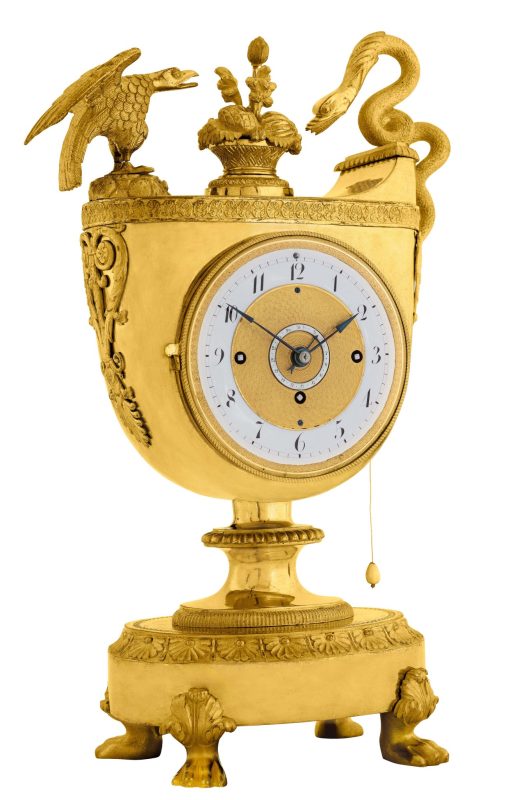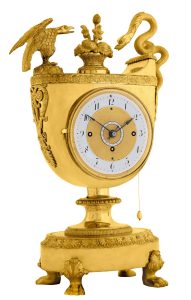Vienna, first quarter of the 19th century
- Case
- engine turned ormolu
- Dial
- engine turned ormolu, enamel dial ring and enamel subsidiary dial for the date
- Movement
- anchor escapement, Viennese grande sonnerie on wire gongs, repeater, turn-off for strike, indication of date
- Height
- 14 in
The motif of the battle of the eagle and the serpent is already used in antiquity and stood for both the duality between the spheres of heaven and earth and the struggle between good and evil. The eagle as a companion of Zeus/Jupiter embodied the divine and righteous, while the serpent was the symbol of the worldly but also the underworld. In Christianity, this iconography was eventually transformed into Jesus’ victory over evil.
The Empire style is characterized by a great fascination for the formal language and allegorical motifs of classical antiquity. Thus, this early 19th century Viennese mantel clock is also a tribute to the art and legends of Ancient Greece and Rome. The oval ormolu base is supported by four lion feet and adorned by a palmette frieze. The vaseshaped case is decorated with ornamental bands, guilloches and fire-gilt bronze mounts. The dial, which is also engine turned and fire-gilt, has a large enamel chapter ring with Arabic numerals and minute track, as well as a smaller enamel ring for the date display. The figural finial consists of three ormolu elements.
In the center is a lavishly filled basket, which probably represents the fruits of a righteous life as well as paradise. The serpent that winds its way up the right side of the case greedily fixes its gaze on the rich harvest. However, the eagle perched on a boulder has spread out its wings protectively and is defending the rewards of the Garden of Eden with a piercing gaze and open beak.This wonderful Empire clock with quarter-hour strike testifies to the outstanding craftsmanshipas well as the great creativity of the Viennese bronze workers. Such an exceptionally rare, fire-gilt case was already a highly sought-after art object even at the time of its creation and could form the centerpiece of any salon.

